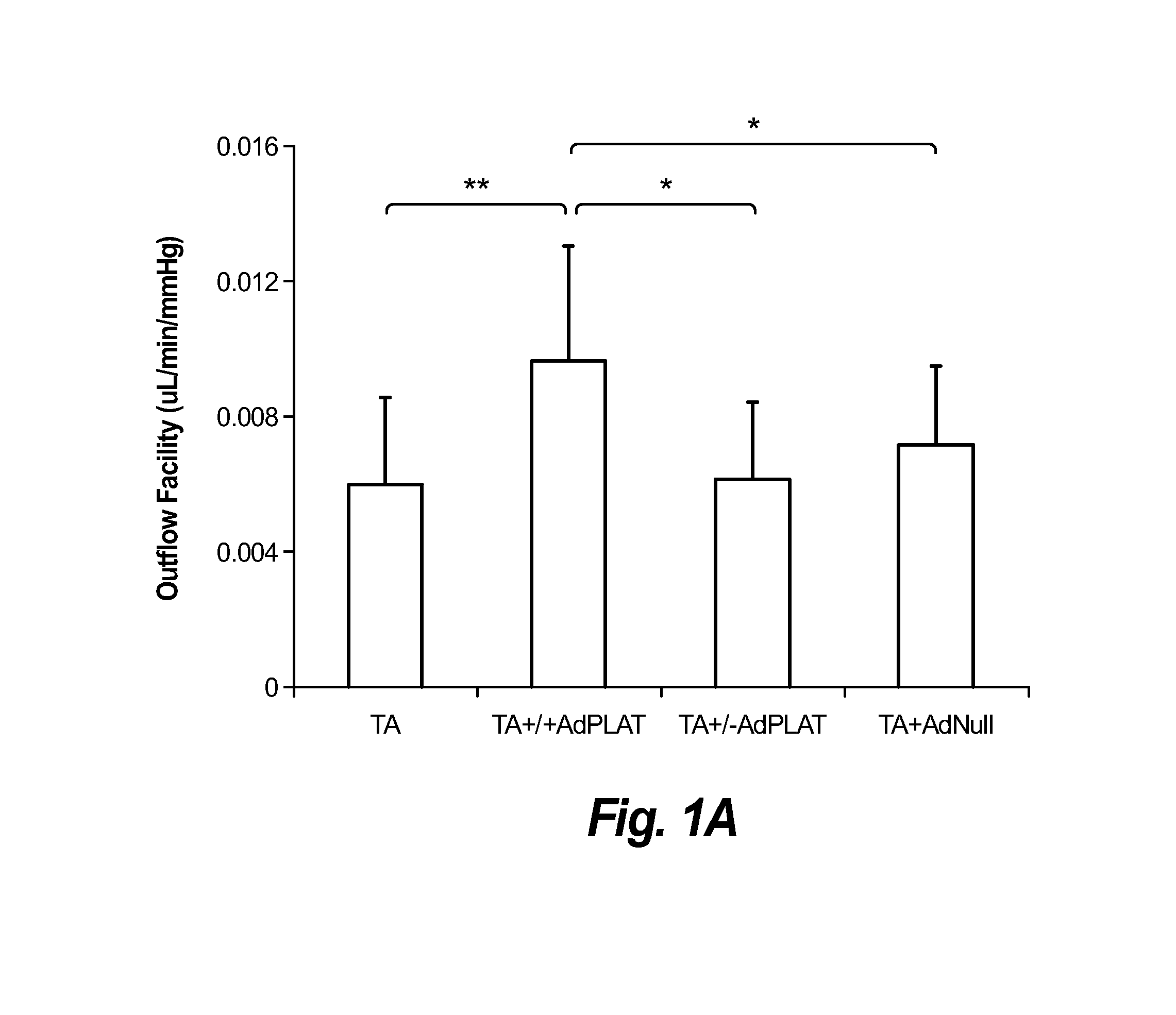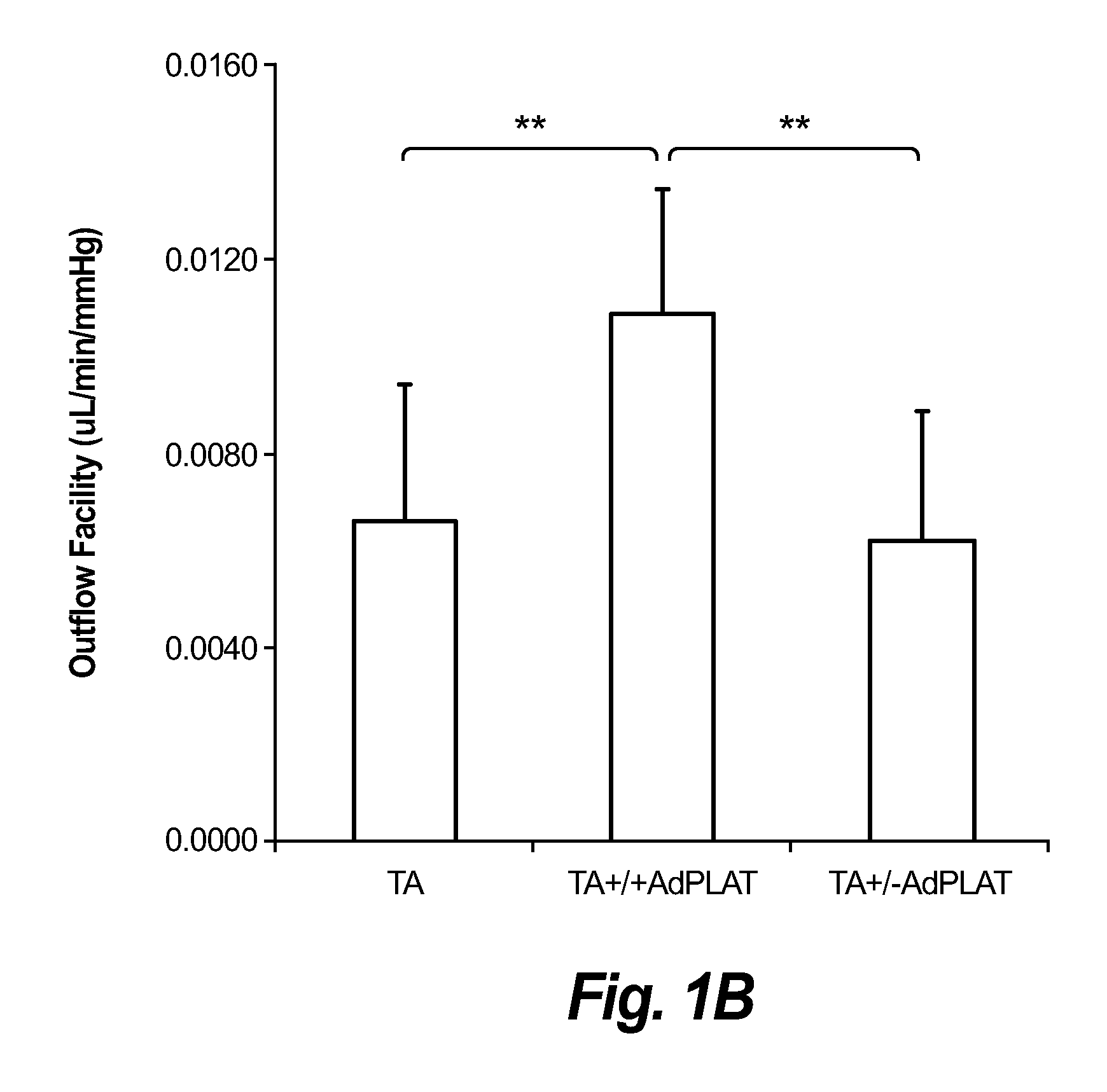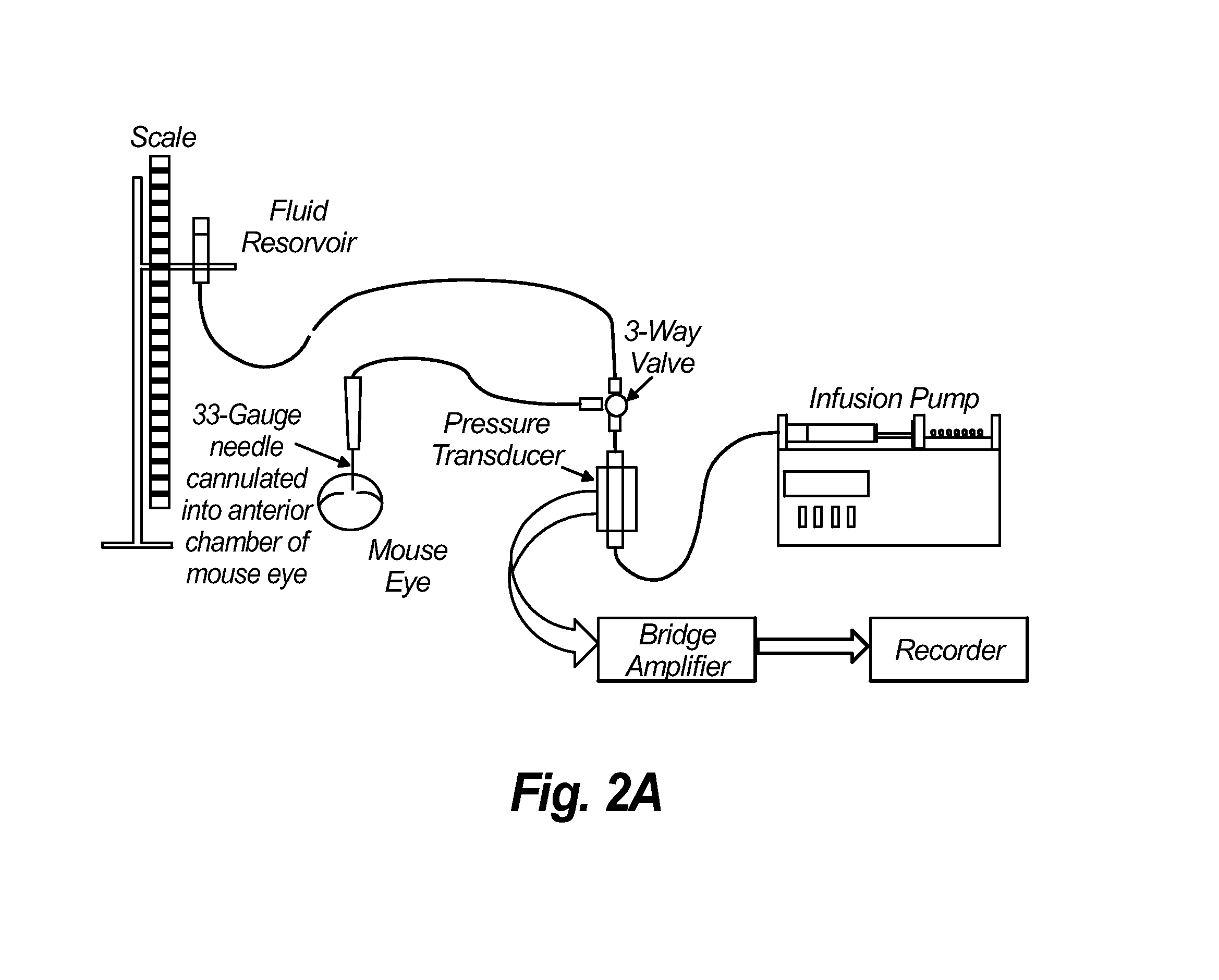Glaucoma treatment
a glaucoma and treatment technology, applied in the field of glaucoma treatment, can solve the problem that no attempt has been made to use tpa for the treatment of steroid-induced glaucoma
- Summary
- Abstract
- Description
- Claims
- Application Information
AI Technical Summary
Benefits of technology
Problems solved by technology
Method used
Image
Examples
example 1
Treatment of Mice with Gene Therapy
[0103]Methods: Adenoviral vectors carrying cDNA of the sheep PLAT gene and a fluorescent reporter gene (mCherry) (AdPLAT) or with no transgene (AdNull) were created. Transgene expression was driven by the CMV promoter. 3 groups of C57 / B6 mice received either: (1) 20 μ1 of triamcinolone acetonide (TA) suspension (40 mg / ml) subconjunctivally bilaterally followed immediately by unilateral intracameral injection with 2 μl AdPLAT (3−4×1012 VG / ml); (2) 20 μl TA subconjunctivally bilaterally followed one week later by unilateral intracameral injection with 2 μl AdPLAT; or (3) 20 μl TA subconjunctivally bilaterally followed immediately by bilateral injection with 2 μl adenovirus AdNull. IOP was measured preterminally. Outflow facility was determined using simultaneous pressure and flow measurements (see FIGS. 2A-2C). After outflow facility measurement, all AdPLAT injected eyes were dissected and viewed under a fluorescent microscope to inspect for mCherry ...
example 2
Treatment of Mice with Small Molecules
[0108]Mice were treated by gavage with a mixture of simvastatin, curcumin and troglitazone (“SCT”). Medications were selected for their direct and indirect effects on tPA. Treatment was initiated 5 days before the administration of steroids as in 1 above and continued for the duration of the experiment. One week after steroid administration outflow facility was measured as above. As seen in FIG. 3, outflow facility of eyes treated with the small molecule combination (SCT+TA) was similar to that of control eyes (Control) and significantly higher than that of steroid treated only eyes (TA_BL). Average+SD for SCT+TA group were 0.00776667+0.00240884 μl / min / mmHg.
[0109]Thus, small molecule treatment can lower IOP and improve outflow facility.
example 3
Treatment of Sheep with Recombinant Human tPA
[0110]Methods. The inventors used recombinant human tissue plasminogen activator (rtPA) (ACTILYSE; Boehringer Ingelheim SA, Buenos Aires, Argentina) in two different protocols.
[0111]Protocol 1. 8 sheep of the Corriedale breed were treated with prednisolone acetate three times a day in both eyes, leading to elevated IOP. After one week, the animals received intravitreal injections of human recombinant tPA (100, 200, 500 and 1000 μs, two animals each) dissolved in balanced salt solution (BSS) in one eye. IOP was monitored for 19 more days while the animals continued to receive treatment with prednisolone. Periodic slit lamp examination was also performed.
[0112]Results—Protocol 1. Sheep develop a well characterized IOP elevation after treatment with topical prednisolone acetate (Gerometta, R., et al., Invest Ophthalmol Vis Sci 50(2): 669-73 (2009)). This treatment is caused by a reduction in outflow facility. As seen in FIG. 4A, treatment wi...
PUM
| Property | Measurement | Unit |
|---|---|---|
| intraocular pressure | aaaaa | aaaaa |
| intraocular pressure | aaaaa | aaaaa |
| intraocular pressure | aaaaa | aaaaa |
Abstract
Description
Claims
Application Information
 Login to View More
Login to View More - R&D
- Intellectual Property
- Life Sciences
- Materials
- Tech Scout
- Unparalleled Data Quality
- Higher Quality Content
- 60% Fewer Hallucinations
Browse by: Latest US Patents, China's latest patents, Technical Efficacy Thesaurus, Application Domain, Technology Topic, Popular Technical Reports.
© 2025 PatSnap. All rights reserved.Legal|Privacy policy|Modern Slavery Act Transparency Statement|Sitemap|About US| Contact US: help@patsnap.com



